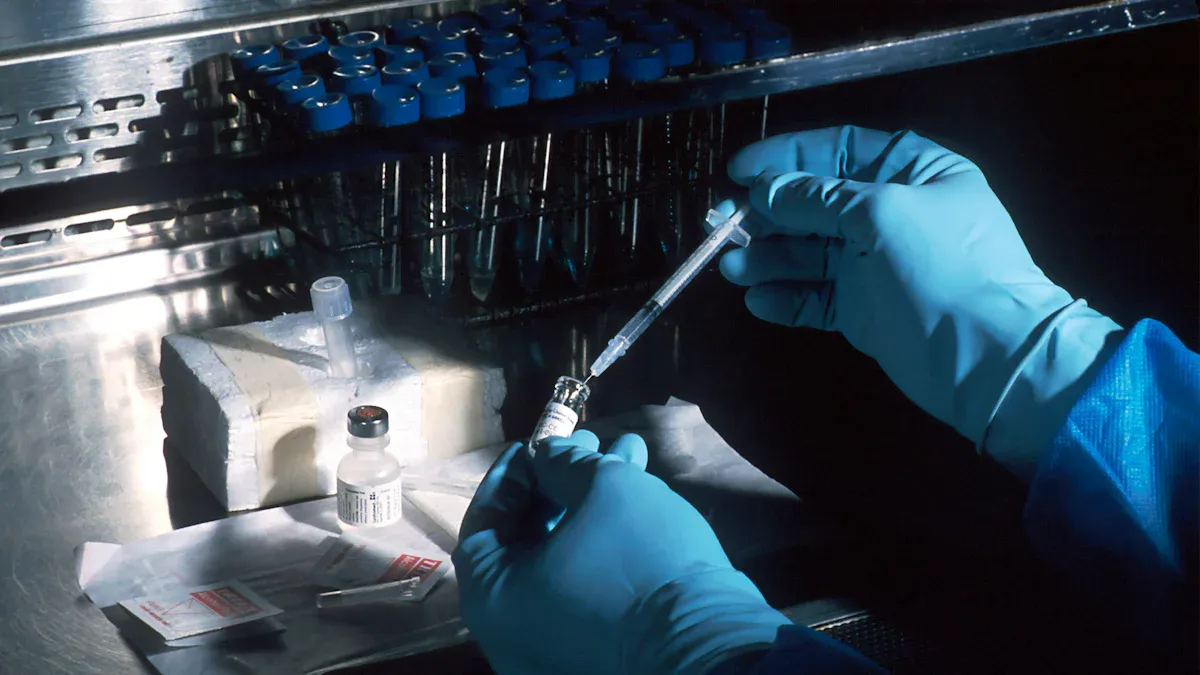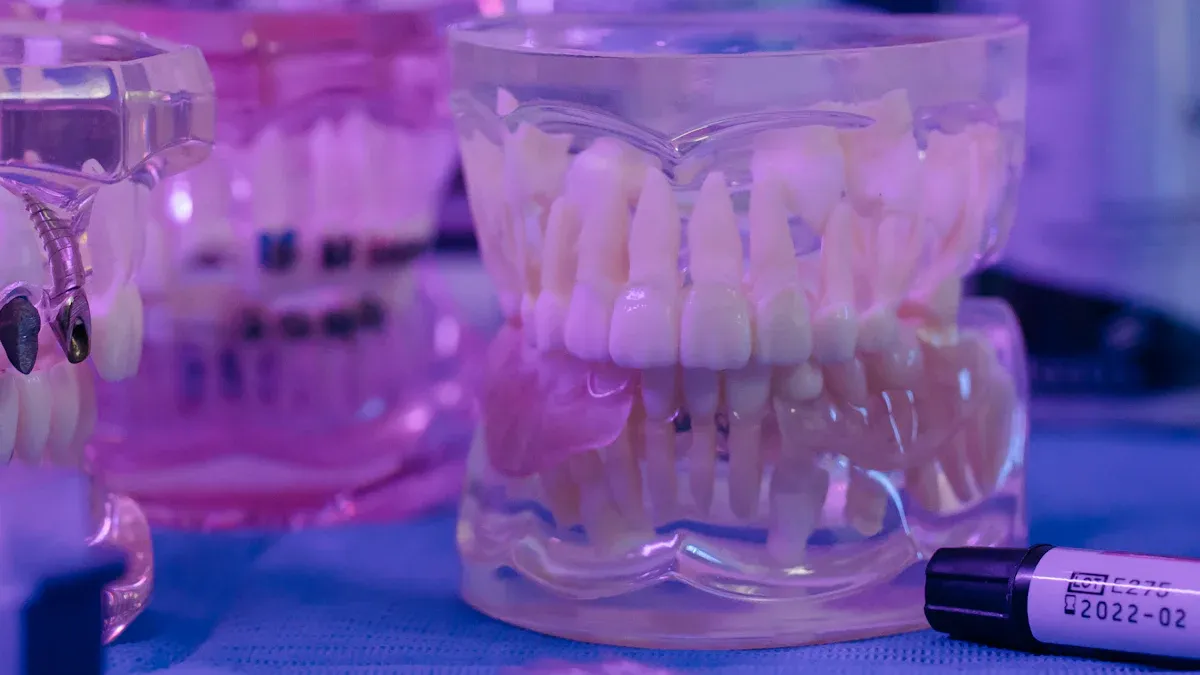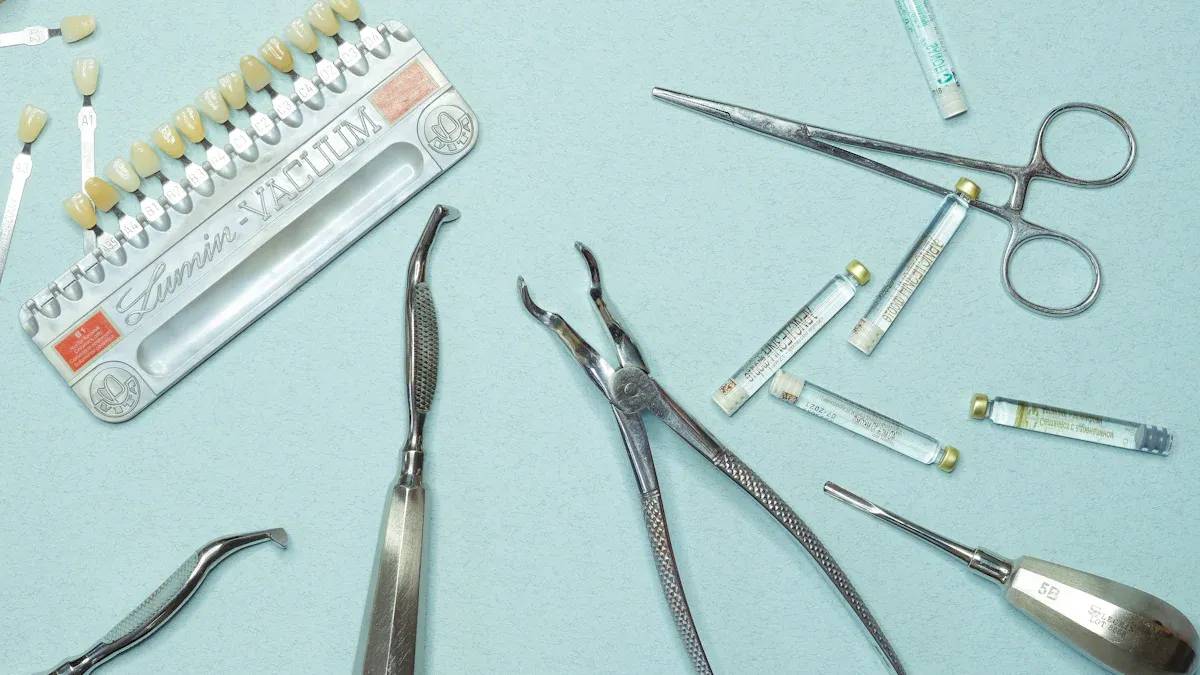What Makes High-Strength Nitinol Tubing Ideal for Vascular Stents

High-Strength Nitinol Tubing for Vascular Stents is an excellent choice for medical applications. This specialized material boasts unique features that enhance its utility. The shape memory of nitinol allows stents to adapt within blood vessels, providing consistent support even under varying conditions. Its superelasticity enables it to bend easily, accommodating complex body shapes. Research indicates that nitinol demonstrates remarkable durability in medical use. Additionally, cooling the material enhances its strength, ensuring reliability over the years. It is biocompatible and associated with fewer adverse reactions. These exceptional qualities make High-Strength Nitinol Tubing for Vascular Stents the preferred option for stent designs in the healthcare industry.
Key Takeaways
Nitinol tubing can remember shapes and bend easily. This helps stents fit well in blood vessels and match their shapes.
Nitinol is safe for the body and doesn’t rust. This means fewer problems and a safer option for patients.
Nitinol is strong and handles stress many times. This makes stents last longer and work better over time.
Nitinol bends easily, making it great for tricky body areas. It lowers the chance of hurting blood vessels during surgeries.
Making nitinol tubing is affordable. It keeps quality high and saves money for hospitals.
Unique Properties of Nitinol for Vascular Stents

Shape Memory and Superelasticity
Nitinol is a special metal that can return to its shape. This "shape memory" helps stents fit blood vessels perfectly. When heated, nitinol changes back to its original form. Tests show it works well under stress, making it reliable in the body.
Nitinol is also superelastic, meaning it bends a lot without breaking. Unlike regular metals, it can stretch and still go back to its shape. Studies show nitinol can recover over 90% of its shape and handle over 6.5% strain. These features make it great for tricky body areas, offering both flexibility and strength.
Biocompatibility and Corrosion Resistance
Materials in healthcare must be safe and long-lasting. Nitinol is both, making it ideal for stents. Research shows nitinol stents cause fewer problems than stainless steel ones. This proves it works well with the human body.
Nitinol also resists rust, even in constant contact with body fluids. This keeps it strong for years. Compared to other materials like stainless steel, nitinol causes less inflammation. Over time, it blends well with the body, proving it’s great for medical use.
Fatigue Resistance for Long-Term Performance
Stents need to last a long time. Nitinol tubing is very durable and handles repeated stress. Tests show it can survive up to 10⁷ cycles of strain. This means nitinol stents stay strong even under heavy use.
The way nitinol reacts to stress and strain shows its strength. Samples with 20–30% cold work last the longest. Companies like AccuPath use advanced methods to make nitinol stents stronger. This ensures they are reliable and long-lasting for medical needs.
Benefits of High-Strength Nitinol Tubing for Stents

Durability and Longevity
High-strength nitinol tubing is strong and lasts a long time. It is made to handle the stress inside the human body. Studies show nitinol stents can survive 370-400 million cycles in ten years. This means they stay strong and work well over time.
Nitinol's special features, like bending back to shape, help it last. Unlike other materials, it doesn’t break easily after bending. Tests show the Supera™ stent is four times stronger than regular ones. It also had no breaks in over 2,000 patients. This proves nitinol is very strong and reliable for medical use.
Flexibility for Complex Anatomies
Nitinol is very flexible, making it great for tricky blood vessels. Its bendable nature helps it fit into different vessel shapes. This lowers the chance of damage and keeps blood flowing well. The Pulsar-18 stent shows this flexibility with its thin, open design. Its smooth coating also reduces friction, protecting vessel walls.
Nitinol keeps its shape even under pressure, which helps in tough areas. Studies show this design improves how stents fit and work. Nitinol is also used in guidewires, helping doctors move through hard-to-reach vessels easily.
Enhanced Patient Safety and Comfort
Nitinol stents are safe and comfortable for patients. They don’t cause bad reactions and stay stable in the body. Patients heal faster and feel less pain with nitinol stents. Recovery is 20% quicker compared to older materials.
Nitinol stents are smooth, so they hurt vessels less. This helps healing and lowers swelling. With its strength and flexibility, nitinol gives patients a safer and more comfortable recovery. Nitinol tools like guidewires and stents keep improving care for patients.
Manufacturing Advantages of Nitinol Tubing
Precision Engineering for Stent Customization
Nitinol tubing is made with great accuracy for stents. The mix of nickel and titanium in nitinol is very important. It helps the material keep its shape and stay strong. Manufacturers carefully check this mix to ensure it works well. Stents also need to be the right size and shape. This helps them fit properly in blood vessels. Special tools allow stents to be made for different body needs.
The surface of nitinol tubing must be smooth. A smooth surface lowers infection risks and works better with the body. Each stent is tested to check its strength and shape memory. These steps show how well nitinol is made for medical devices.
Cost-Effective Production Processes
Making nitinol tubing is fast and saves money. Advanced tools like lasers and heat are used to shape it. These methods waste less material but keep the quality high. Nitinol tubing can be made in large amounts without losing quality. This makes it a good choice for healthcare.
Nitinol stents last a long time, saving money over time. They don’t need to be replaced often, helping patients and makers. This mix of saving money and lasting long makes nitinol great for stents.
Consistent Quality and Reliability
Nitinol tubing is known for being reliable and high-quality. Makers check every step, from choosing materials to testing the final product. This ensures nitinol works well in medical tools like stents and guidewires.
Nitinol stents resist rust and wear, staying strong for years. They work even in tough conditions, keeping patients safe. By being reliable, nitinol tubing helps create safe and effective medical tools.
Why Nitinol Works Better Than Other Materials for Stents
Comparing Nitinol to Stainless Steel and Cobalt-Chromium
Nitinol is a special metal that beats stainless steel and cobalt-chromium in stents. It can change its force to fit different blood vessel sizes. Other materials have fixed force and can’t adjust. Nitinol bends easily, unlike stainless steel, which struggles in tricky areas. It also fits better with vessel walls, making it safer.
Feature | Nitinol Stents | Other Materials |
|---|---|---|
Force Adjustment | Yes | No |
Flexibility | High | Medium |
Even Scaffolding | Moderate | High/Low |
Fit with Vessel Walls | Excellent | Moderate |
Cell Size Effect on Results | Big Impact | Less Important |
Nitinol’s strength and flexibility make it better than stainless steel. Stainless steel is weaker and less bendable, with a yield strength of 331 MPa and stiffness of 190 GPa. Nitinol’s strength ranges from 195 to 690 MPa, and its stiffness is lower at 75–83 GPa. This makes nitinol great for stents that expand on their own. Stainless steel and cobalt-chromium also don’t work well with MRI scans, but nitinol does.
Nitinol’s fatigue limit is lower than DKTH in other metals. Scientists are studying how nitinol resists cracks over time.
Benefits for Small Surgery
Nitinol stents are great for small surgeries because of their special features. They expand on their own, making them easy to place. This lowers the risk of hurting arteries compared to stents that need balloons. Nitinol bends without breaking, keeping blood vessels safe during surgery.
Nitinol stents are strong and flexible, fitting tricky vessel shapes.
Small surgeries with nitinol stents help patients heal faster and feel better.
Nitinol doesn’t rust, so it lasts longer and causes fewer problems.
These features make nitinol stents a top choice for doctors who want safe and reliable tools.
Success in Real-Life Use
Studies show nitinol stents work well in real patients. People with nitinol stents had better blood pressure and healthier vessels. For example, blood pressure improved in 96% of cases, and no major problems happened.
Measure | Before Stent | After Stent | P-Value |
|---|---|---|---|
Pressure Difference at Blockage | 67.48 ± 14.79 mmHg | 5.04 ± 3.01 mmHg | < 0.001 |
Systolic Blood Pressure (SBP) | 175.53 ± 15.99 mmHg | 147.22 ± 12.83 mmHg | < 0.001 |
Normal SBP Rate | N/A | 96% | N/A |
Blood Pressure Medicine Count | 2.14 ± 0.57 | 0.87 ± 0.43 | N/A |
Major Problems | 0 | 0 | N/A |
These results prove nitinol stents are safe and effective. They are now the best choice for stents in healthcare.
High-strength nitinol tubing works great for vascular stents. It has special features that make it very useful. Its shape memory helps it fit well in blood vessels. Superelasticity lets it bend and stay strong in tricky areas. Nitinol is durable and safe for the body, helping patients heal better. It also resists rust, so it lasts a long time. Making nitinol tubing is precise and saves money, keeping quality high. These features make nitinol the best choice for stents, helping people worldwide.
Nitinol keeps improving stent technology, giving patients safer and better care.
FAQ
What makes nitinol tubing special for vascular stents?
Nitinol tubing has shape memory and superelasticity. It adjusts to blood vessel shapes easily. It resists wear and stays safe for long use. Nitinol doesn’t rust, making it better than stainless steel.
How does nitinol help patients recover better?
Nitinol stents are flexible and strong. They lower vessel damage and swelling. This helps patients heal faster. Their smooth surface reduces rubbing, making procedures safer and more comfortable.
Is nitinol tubing affordable for making stents?
Yes, nitinol tubing is made efficiently. Tools like lasers and heat save material while keeping quality high. Its long-lasting nature lowers replacement costs for patients and makers.
Can nitinol stents be used in small surgeries?
Nitinol stents work well in small surgeries. They expand on their own, so fewer tools are needed. This reduces artery damage and helps patients recover faster. Doctors prefer them for these procedures.
How does nitinol compare to stainless steel in stents?
Nitinol bends better and lasts longer than stainless steel. It handles stress without breaking and fits vessel shapes well. Nitinol also works with MRI scans and doesn’t rust, making it safer for medical use.
See Also
The Importance of Nitinol Tubing in Modern Medicine
Nitinol Tubing: A Key Component for Minimally Invasive Surgery
The Manufacturing Process of Nitinol Tubing for Healthcare

